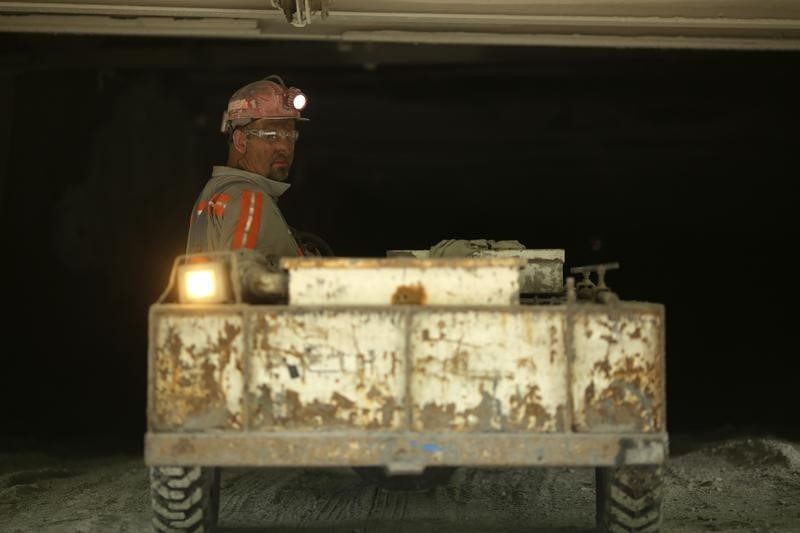The Australian mining industry is experiencing a sharp uptick in growth as the energy transition advances, with new battery metal and energy exploration companies popping up all over the country.
In 2021, the industry made more than $300 billion in export revenue, representing one of the largest contributors to economic growth in Australia.
The demand for critical minerals like lithium, nickel, graphite and high purity alumina (HPA) continues to grow, and there are more than 250 projects currently under development in Australia.
For those projects to come to fruition, expert talent from a range of specialisations will be required and, at present, the mining industry simply does not have enough bodies to fill every position.
Shrinking talent pool
A report from PwC polling mining CEOs revealed 41% are concerned skill shortages could threaten the economic viability of the mining industry in the next decade.
Further, 71% of mining leaders say they are being held back by a shortage of talent, unable to deliver targets and strategic objectives without the expertise necessary to do so.
Mining engineering graduates in Australia are also on a steep decline, falling from just under 300 new graduates in 2015 to just over 100 by 2018.
Data from McKinsey reveals mining engineering enrolments have been dropping year-on-year, falling 63% since 2014.
Of 24,400 mining workers projected to be needed in 2026, only about 16,000 are likely to be available.
We’re not alone – the 2023 Canadian Mining Outlook from Mining Industry Human Resources Council shows that job vacancy rates in the mining sector have doubled from pre-pandemic levels, and the population of engineering graduates in the US has also shrunk 39% since 2016.
At present, it seems mining is not a particularly desirable industry for young students and workers.
Tips to draw talent in tight market
Careermine, a division of Glacier Resource Innovation Group, has produced a report on the state of the mining industry that offers six tips on how to attract talent in the mining industry.
While these tips may seem obvious, they’re also data-driven and may provide some insight into the way Australian workers approach job seeking.
Tip #1 - Use social media and other digital channels
The job market, especially in highly skilled sectors, has become something of a digital marketplace in recent years.
More than 40% of workers across all age groups have used social media websites like LinkedIn to job search.
Careermine’s data indicates a strong presence across multiple digital arenas will garner the most attention, with a focus on social media, company websites and select job boards garnering maximum attention.
Tip #2 - Be specific, transparent and realistic in job postings
The number one red flag amongst all age groups except 35-44-year-olds is a vague job description, and the second is unrealistic expectations.
“When writing a job description make sure that it includes well-defined responsibilities and objectives, achievable goals and use spell check,” Careermine’s report reads.
“All this is critical for attracting top talent and fostering a positive employer-employee relationship.”
Tip #3 - Pick the right window
The sweet spot for a job posting is about a month – most job searchers engage with the task for either a day or two, or in specialist cases, well more than two months.
The impact of an initial job posting often brings extra interest – after that, it’s not worth keeping up for much longer than a month, according to Careermine.
Tip #4 Use job alerts
In the fast-paced and often precarious job market of today, employees are always on the lookout for a way to step up their careers, and following a company for job alerts is a great way to stay in touch with the shifts and turns of market demand.
Job alerts are partially demographic-based – those aged between 44 and 25 used them the most, relying more heavily on them than older generations, who may only use them some of the time.
Careermine saw an increase of 55% in job alerts between January 1 2023 and October 31, 2023, a stark example of their growing popularity.
Tip #5 - Opportunity for career advancement
With so much competition for a shrinking pool of labour, tapping into what potential employees actually care about becomes paramount.
That changes throughout a person’s career, meaning the right enticement for one job description may not jive with a more senior applicant, or vice versa.
For 25-24-year-olds, job training was their number one concern – they desired the opportunity to improve and expand their skillsets and expertise more than anything else.
Pretty much all respondents cited exciting projects and opportunities, competitive compensation and benefits, and career training and opportunities, however.
(Source: How to attract the next generation of mining professionals – Careermine)
Tip #6 - Forget about the cover letter
While cover letters can be a good tool to weed out less enthusiatic applicants, the current state of the mining labour market makes that mostly unnecessary.
“Younger generations tend to emphasise skills and experiences over formalities like cover letters, aligning with contemporary hiring practices that focus on tangible achievements,” the report reads.
“For entry-level jobs, it might be worth removing the requirement of having a cover letter to increase the number of job applications you receive.”
“There is a very challenging market competing for engineering skills,” the UK Royal Academy of Engineering director Rhys Morgan told the Financial Post recently.
“A fresh supply of new talent is critical to mine the materials that will enable the successful transition to electrification to meet net-zero ambitions.”
